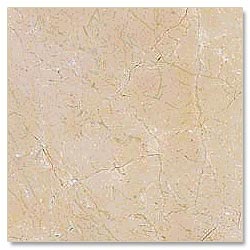|
Marble Varieties /
Colors |
|
| PHYSICAL PROPERTIES OF MARBLE | |
| Physically, Marbles are metamorphic representatives of limestones and are also siliceous calcium carbonate rocks except Green marble, which is a magnesium silicate rock of serpentine nature of alkalis & ferromagnesian minerals. | |
| Hardness | 3 to 4 on Moh's Scale |
| Density | 2.5 to 2.65 Kg/m3 |
| Compressive Strength | 1800 to 2100 Kg/cm2 |
| Water Absorption | Less than 1% |
| Porosity | Quite low |
| Weather Impact | Resistant |
| Thickness | 12-30 mm |
| Country of Origin | Made in India |
| CHEMICAL PROPERTIES OF MARBLE | |
| Chemically, both limestone and marbles are siliceous calcium carbonate rocks. | |
| Lime (CaO) | 38-42% |
| Silica (SiO2) | 20-25% |
| Alumina (Al2O3) | 2-4% |
| Other Oxides like Na, Mg | 1.5 to 2.5% |
| Loss On Ignition (LOI) | 30-32% |
| Chemically Green marble has 38-40%
Sio2, 34-38% MgO, 2-3% Al2O3, 5-6% Iron Oxides,1-2% CaO & 12-13%
LOI. Marble and other calcareous stones, are referred to as acid sensitive. Calcareous stones are readily dissolved in acid, therefore acidic products should not be used on limestone and marbles. There are several types of marbles, including calcites (from calciferous limestone), dolomites (from dolomite limestone), serpentines (typically green marbles) and travertine (sedimentary limestone). Each of these is similar in their composition, that being predominantly calcium carbonate, and their capability to take a polish. |
|


